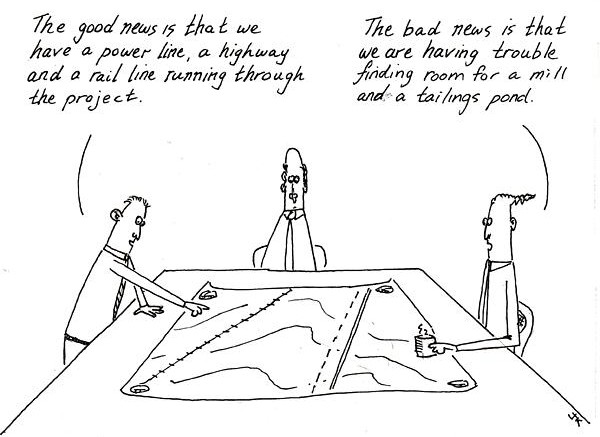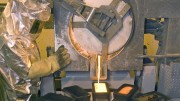This September’s twin gold conferences in Colorado in some ways mark a new era for gold miners, with a new-found humbleness and overall confidence in the industry’s fundamentals.
Held at an Aspen resort, the Precious Metals Summit focused on junior gold and silver companies, and boasted record attendance. The prime attraction of this event has become the one-on-one meetings that can be easily lined up by interested parties. While the mood was not exactly exuberant at this year’s event, the participants certainly have done more than just survive the last downturn, and are in the business for the long haul.
The Denver Gold Forum — held the week after — also had record attendance, celebrating its twenty-fifth anniversary and ascendance from a friendly, informal meeting in Denver 25 years ago to the juggernaut it is today.
The hubris traditionally displayed by some of the gold company executives — even two or three years ago, when gold prices were in the US$1,800 per oz. range — was long gone.
Indeed, most of faces were gone, too — part of the wave that cleared out the executive suites of most of the largest mining companies around the world, as disgruntled shareholders furious at share-value destruction, cost overruns and asset writedowns demanded changes at the top.
Most of the forum speakers from the top gold-mining companies have only been in the corner office a year or so, and aren’t as flashy or charismatic as some of the people they’d replaced: Barrick Gold co-president Jim Gowans, appointed January 2014; Newmont Mining president and CEO Gary Goldberg, March 2013; AngloGold Ashanti CEO Srinivasan Venkatakrishnan, May 2013; and Kinross Gold CEO Paul Rollinson, August 2012.
Remarkably, the boyish Agnico Eagle Mines CEO Sean Boyd (appointed in 1998) and Goldcorp president and CEO Chuck Jeannes (appointed December 2008) are now elder statesmen among gold-mining execs.
But it was much more than a contrast in style. The whole emphasis in the talks was on how each company has succeeded in efforts to control costs and squeeze more efficiency out of operations.
And with so many gold companies taking on multi-billion dollar debt during the growth for growth’s sake era of the mid-2000s, it’s now become a selling point for mining company execs that most of their company’s debt isn’t due in the next few years.
While the talk in the mid-2000s was about building a company that was positioned to take advantage of rising gold prices, the new, more modest mindset was perhaps expressed best by Agnico’s Boyd, who said: “We’ve built a business that can withstand the volatility of the gold price, and that’s a good place to be.”
After a few years’ absence, Dundee Capital Markets’ Martin Murenbeeld returned as a keynote speaker with an hour-long dissection of the gold market, and he had a broadly reassuring message for gold miners: gold prices should more or less hold their current levels over the next year.
His answer to the question, “What went wrong for gold in 2013?” was twofold: “An orgy of exchange-traded-funds sales” totalling 881 tonnes [28.3 million oz.]; and investors moving heavily into equities, with a “massive negative correlation” of -0.88 between gold and the S&P 500 Index in 2013.
Murenbeeld’s answer to “What went right in 2013?” was that Chinese net imports from Hong Kong set a record at 1,158 tonnes (37.2 million oz.), up 208% from 2012, and emblematic of strong Chinese buying. He commented that “had it been left to the American buyer, gold prices might have had the fall to US$800 or US$900 per oz. in order to pick up that kind of volume of gold.”
He added that “one of the really interesting things that is happening is that the locus of price setting is going to move to Asia, and I’m sure I’m not the only person who noticed that when New York opens, prices get soft. But when New York is not open, prices tend to stabilize or rise. In fact, the non-New York day prices of gold are pretty good.”
Murenbeeld predicts that gold prices will average US$1,283 per oz. in 2014, end the year at US$1,274 per oz. and average US$1,335 per oz. in 2015.




Be the first to comment on "Editorial: Gold in Colorado"